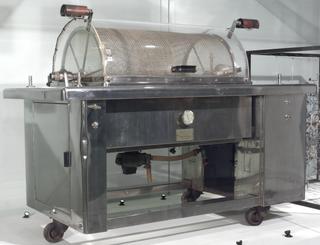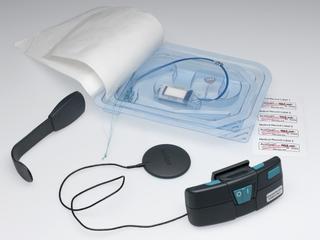
Insulin PassPort patch system, United States, 2007
- Made:
- 2007 in United States
- maker:
- Altea Therapeutics








Box of 7 transdermal patches used with the PassPort (TM) Applicator device for the delivery of basal insulin, made by Altea Therapeutics, US, c.2007
The insulin skin patch system is designed to maintain levels of basal insulin – background insulin – in the body. The device called the ‘Applicator’ is used to place a patch to the skin. Once applied, the patch is activated and starts delivering insulin. Applying insulin patches is believed to be more convenient than conventional injections, so it is hoped that people with diabetes will find it easier to maintain their insulin levels using this system.
According to the makers, the device lowers the risk of hypoglycaemia, which occurs when blood sugars are low due to an overdose of insulin, as the patch can be removed immediately. Insulin normally has to be stored in a refrigerator but the patches can be stored at room temperature.
Details
- Category:
- Therapeutics
- Object Number:
- 2007-59/2
- Measurements:
-
overall: 125 mm x 95 mm x 60 mm,
- type:
- insulin delivery device
- credit:
- Altea Therapeutics




